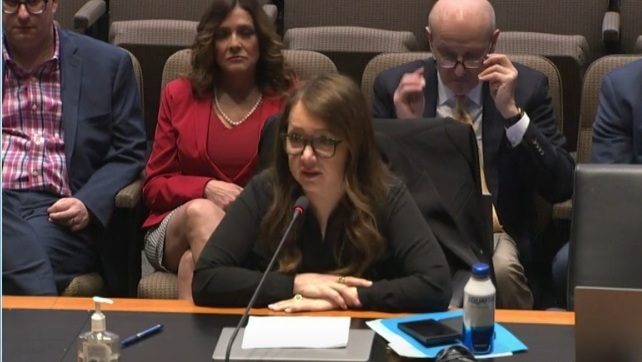
Roadmap roundtable: We know what the problems are, so what are the solutions?
NZI gathered a group of investors and consultants to discuss solutions and challenges to building meaningful net zero roadmaps.
Vicki Bakhshi, director/climate strategist, Columbia Threadneedle
Dr. James Corah, head of sustainability, CCLA
Marian D’Auria – global head of risk & sustainability, GFG Alliance & chair, pension committee, University Superannuation Scheme
Chris Dodwell, head of policy & advocacy, Impax Asset Management
Peter Findlay, publisher, Net Zero Investor
Phil Fitzgerald, director, Financial Reporting Lab, FRC
Beverly Gower-Jones, managing partner, Clean Growth Fund
Jordan Griffiths, sustainable investment consultant, Barnett Waddingham
Solange Le Jeune, sustainable investment, FTSE Russell
Simon Jones, head of responsible investment, Hymans
Dr. Rory Sullivan, CEO, Chronos Sustainability
Sarah Wilson, chief executive, Minerva Analytics
I’m concerned that we have a set of herd behaviors going on in the investment industry which are actually creating all the risk today.
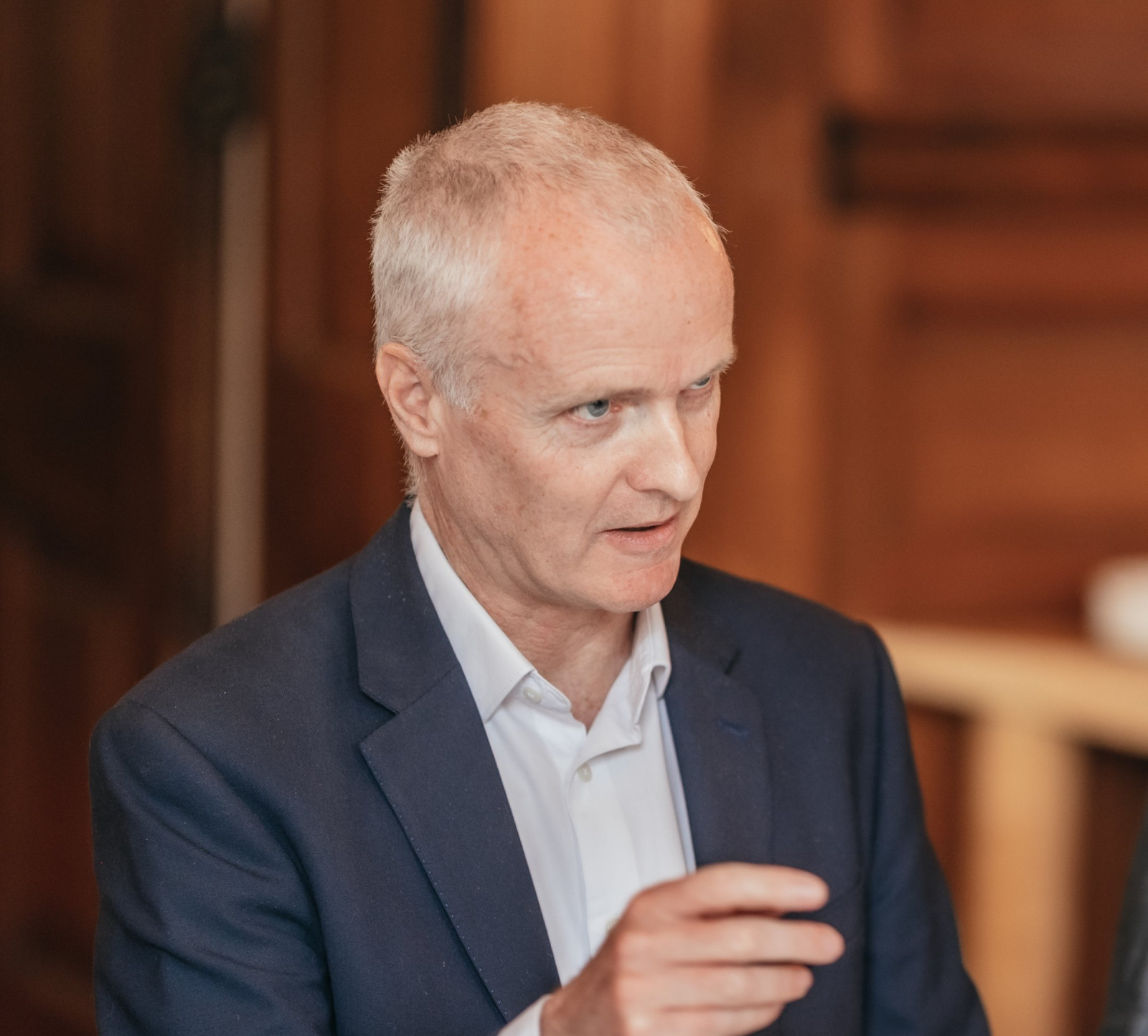
Sarah Wilson: On any journey you need a map and a plan, but like any good explorer you sometimes have to be ready to ditch the map.
I worry that people have come up with a magic number and it’s going to be the answer to all our questions. We need a principles-based approach and an open mind because we do not know what we’re going to find on this journey.
The idea that we should all hurtle along in a gang, down the same path, in the same vehicle worries me deeply.
Data will be vital. We need companies with a carbon impact to disclose consistently in a way that we can ingest and use it in our models. The idea that this is the way, the truth and the light is very, very dangerous.
We crashed the financial system in 2008 and governments bailed it out. We can’t crash the planet and we shouldn’t be too dogmatic.
Rory Sullivan: Let me start by asking, ‘aren’t asset owners and regulators their own worst enemies’? We’re seeing asset owners making commitments, which are being interpreted as targets and we’re seeing regulators driving a set of reporting requirements which are pushing people to report scope 1 and 2 data and optimise their portfolios against the same.
Sarah’s diagnosis of data is correct but I’m concerned that we have a set of herd behaviors going on in the investment industry which are actually creating all the risk today.
So yes, data is a problem, but I think there’s a more fundamental problem about people making dumb commitments – when they’ve no idea what they mean – and the regulators are making assumptions that the data can be relied upon as a precise measure of risk.
There are different things going on which are building towards, not away from, the planet crashing.
I worry that it pushes us all to achieve net zero through transactions and by selling companies we actually should be working with.
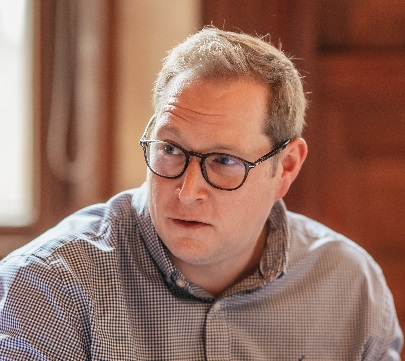
Marian d’Auria: The trouble is you can make your portfolio look nice today, but it doesn’t necessarily align with where we’re trying to get to as an industry or as a people. We’re speaking to Responsible Steel about all the promises, pledges and transition plans that have been made, in comparison to the financial flows that are coming in to support the plans. There’s definitely a disconnect there.
Can we see the capex to finance the transition? Does the carbon intensity of your business today tell us where you’re going? It tells us where you’ve been but what about your plan? If you’re investing in a business in-transition you need to know if the plan is realistic?
The danger is that if the sector and the regulator just keep looking at today’s data and don’t take a wider view of the long-term viability of a company’s transition plan, then you run into problems.
Vicki Bakhshi: I agree that there’s a problem with looking at data as an end in itself, and not as a means to an end. Any kind of ESG data can be dangerous if you use it without question. It’s a means on identifying risk. So scope 1 and 2 data is great if you know what it is and what it means, but it’s the first stage in the process.
Then you have to ask if your biggest contributors are performing? Can you engage with them? Will you need to use your vote to push them forward?
It’s using those tools where we have the most impact.
And there is a trend of setting these scope 1 and 2 targets which leads you almost inevitably to re-allocate out of heavily emitting sectors, irrespective of how well they’re doing. But we still need to invest in steel and we still need to invest in cement; we just need to invest in the really good ones who are trying to get to net zero.
And there is a trend of setting these scope 1 and 2 targets which leads you almost inevitably to re-allocate out of heavily emitting sectors, irrespective of how well they’re doing.
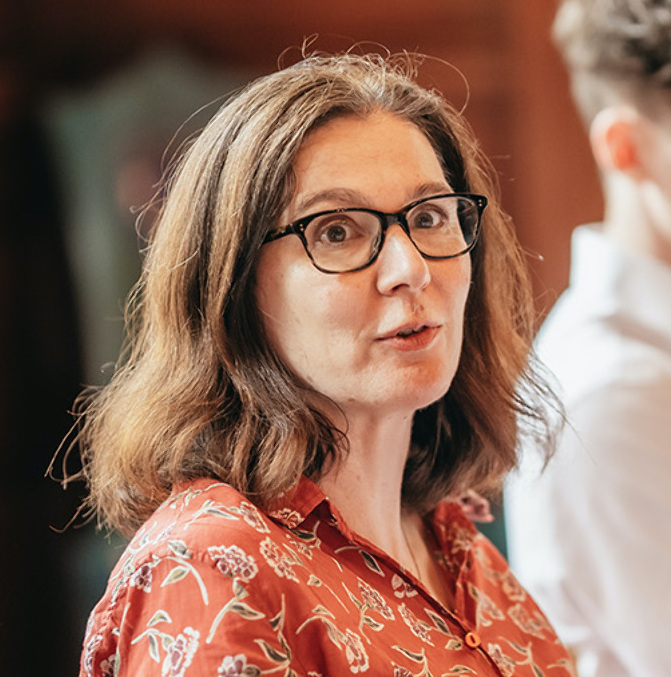
James Corah: We find that setting a net zero target and having a low relative carbon footprint is almost a table stakes game for us. We don’t get considered for mandates if we don’t do that and I worry that it pushes us all to achieve net zero through transactions and by selling companies we actually should be working with. The harder work is decarbonizing the real world and I think we all have to be really careful that what we’re telling our clients is good.
It's very easy to give asset owners the carbon footprint of a portfolio and say, look, aren’t we great. What actually really matters is what’s going on in the real world and some of the debates we’re seeing are pushing us away from achieving the real change we need to see.
Chris Dodwell: Ultimately, the big question is how do you translate these net zero commitments to the financial sector? I’m very pleased that the Paris agreement gives us a net zero goal – as effectively being equivalent to 1.5 degrees. Countries adopting net zero targets is an excellent idea – 90% of the world’s economy, post-Glasgow (COP26), have done that.
At the national level that makes sense, but every company achieving its own net zero carbon footprint…is that what’s really implied by those national and international targets?
Probably not because at the national level you’ll have certain sectors that will be emitting.
Where I think we’re really struggling with is trying to make sense of the commitments in financial institutions.
So, what are the levers an asset manager can actually pull?
The first thing is we can price risk accordingly: if we get decent data, the TCFD framework should allow us to price companies properly. Then we can move out of the companies who aren’t transitioning and into the ones that understand the opportunity.
Secondly, we can develop products that allow capital to flow into the right solutions. That’s what we do at Impax, but actually some of the solutions are more carbon intensive than other areas of the economy.
Thirdly, we can engage with companies and get them to see the opportunities, and we can get involved in policy advocacy and talk to governments about putting effective policies in place rather than outsourcing their commitments into the private sector.
I think that’s where we should focus our attention and the discussion around the transition plan gives us an opportunity to reset…Decarbonization targets shouldn’t be the metric to trump all others and I believe we need more of a dashboard of climate-related disclosures which would include your progress on a decarbonization target along with all the other considerations I mentioned.
Beverly Gower-Jones: I think there’s one key thing missing to the discussion so far which is the breadth of projects that can’t decarbonize quickly enough because they simply don’t have the technology in place. The one thing we should all be doing much more of is investing in fund mangers who are investing in the companies whose technologies can accelerate decarbonization.
That’s the single biggest low-hanging fruit.
Look at the pharmaceutical sector; they don’t have decarbonized solutions for the coal chain. IT is being developed and could be accelerated more quickly. But the bottle neck in all of this is the absence of a joined-up funding ladder from the grand and seed phase in R&D all the way through to growth, series B and C, and through the debt and project finance.
And if we start to add that to the list of things we consider to be our responsibility to be invest in then the rate of pace and change would be so much bigger and so much faster.
My poster child at the moment is the European Commission because they’ve recognised that it’s all about the green deal.
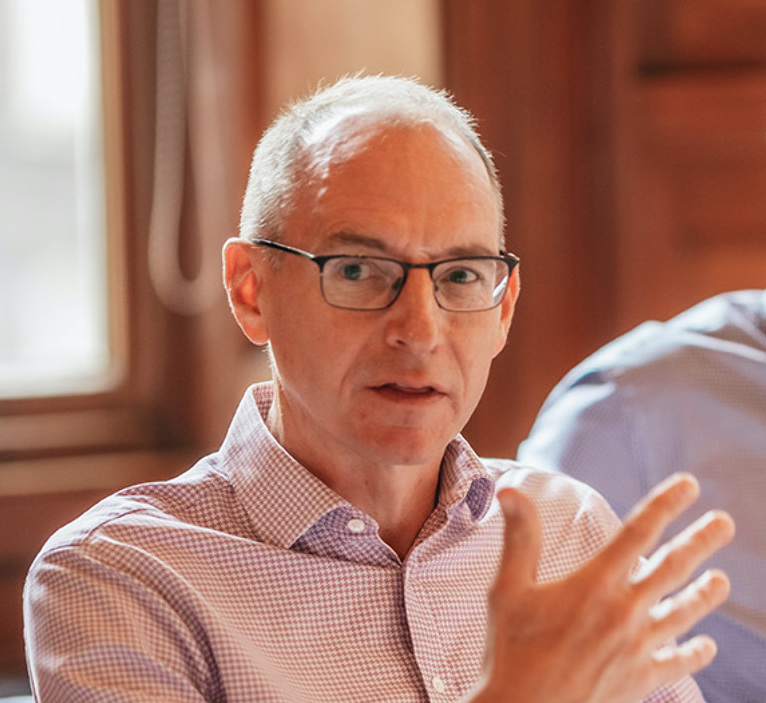
Simon Hughes: Most of our clients are at the very early stages of grappling with this topic. They are investing against the backdrop of having to comply with regulatory and TCFD requirements around governance and disclosures, and they are developing an understand of what some of the data is telling them.
Do they need to understand that better? Yes, absolutely and the data can only get better.
So, educating decision makers and supporting their understanding of the data they’re getting is going to be important, but I think the most effective step that trustees and asset owners can take is, having gone through a reporting exercise once, to pause, reflect, and question what it all means.
What does this mean for our objectives? What can we actually do to meaningfully influence our targets?
Climate risk can't be boiled down to a single number in my mind, and so we would agree with dashboard approach mentioned earlier, and to look at the risks through multiple lenses.
Solange Le Jeune: We’re working with a plethora of data and analytics that we're trying to bring together to help us understand portfolios better and drive better investment strategies. These are complicated issues we’re looking at, that can’t be distilled into a single data point about carbon.
The data is becoming more sophisticated in analysing what companies are actually doing and where they are on their individual trajectories. All sectors are not starting from the same point and the data we helped develop with the Transition Pathway Initiative tries to look at companies in a more sophisticated way.
In a given sector, is it scope 1 and scope 2 emissions that we need to focus on? Or is it appropriate to include scope 3 emissions only? Are there sectors we need to be a bit more patience with? These are the types of questions we’re asking when we look at different sectors.
However, summarising issues into one score is often the only solution available for lack of resources, disclosure or information available. In that case we need to use simplified scores/data points as flags for key issues and to inform investment decisions.
Phil Fitz-Gerald: I think as investors you want to collect and analyse company data but it’s also sensible to ask them, the corporates, what they’re doing with that data. How are they using it to drive strategy and make business decisions?
My background is in corporate accounting where companies would use management accounts to drive decisions, and then financial accounts as the basis for what you disclosed and of course there was a key relationship between the two.
I’m not sure we’ve got that with environmental and social data. So the companies who can tell you what they’re doing with the data – we’ve collected X,Y &Z, for these reasons, and now it’s driven these decisions – those are the companies who are responding properly.
On the other hand, there are companies that are collecting data because they think that’s what investors want, and it isn’t driving any change within the company itself.
Start by collecting the data that’s going to be useful for the sustainability and running of your company and then think about what you report and what the regulatory requirements are.
Jordan Griffiths: I think we’ve established that the goalposts are moving and the ball is changing shape, and that there isn’t a one-size fits all solution here.
It’s really important for investors that they can walk before they run. Take a step back, look at your policy, and build a robust strategy.
Engagement is going to the way forward for investors – although I don’t think engagement and divestment are mutually exclusive. Either way you’re going to need a robust stewardship strategy which helps you to understand if you’re achieving what you want to…through engagement or divestment.
I think messages are being manipulated, the real meaning of things is getting lost in the urge to be seen to comply with a magical number.
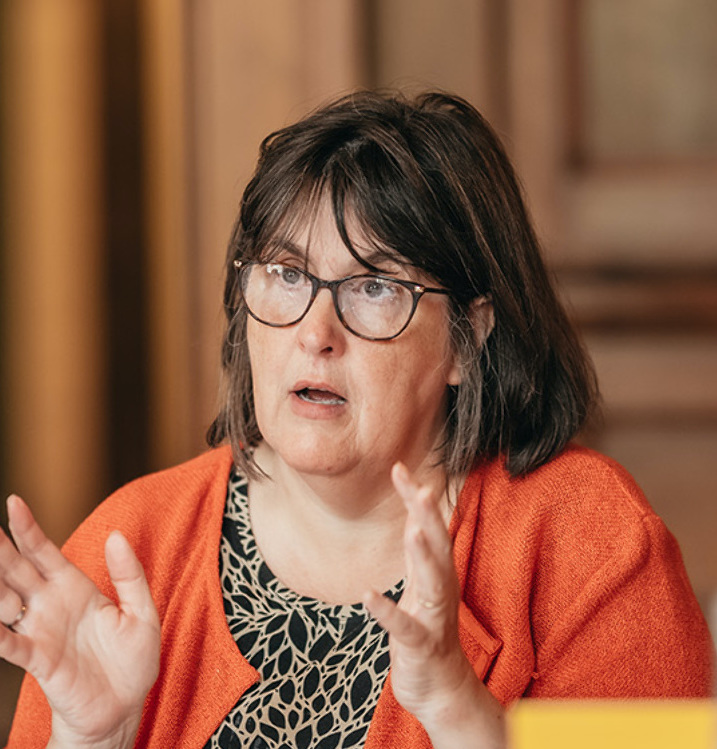
Sarah Wilson: I think messages are being manipulated, the real meaning of things is getting lost in the urge to be seen to comply with a magical number. You only have to look at the recent backlash against ESG which is hugely politically motivated to see how the ESG industry is being turned on when they’re trying to the right thing for investors in very difficult circumstances.
We need to learn the mistakes of the last 30 years and jump on this straight away.
Stewardship policies have improved massively over the last ten years as people have focussed on the need to communicate their ideas.
I don’t want to be a Cassandra but going back to an earlier comment, the data absolutely can het worse and if you look at the debate that’s going on with the IFRS and the Sustainability Standards Board, you can see there are two school of thought about what sustainability is, and what annual reports are for.
Marian D’Auria: Having spent most of my career in risk management and seeing fist hand the damage that ‘value-at-risk’ caused, I was really very optimistic about ESG because it didn’t have perfect data, or perfect models, and it forced us to think about it, have conversations, and accept that it was all a bit nuanced.
Now I’m seeing this slow demise towards hard numbers and black boxes and that’s a huge opportunity risk. Not just in terms of how we think about climate risk but how we think about risk more generally.
Rory Sullivan: Picking up on Phil’s point, I think we should also be asking investors what they’re doing with company information? We’re seeing a huge demand for data but we’re not seeing anywhere near as much credible conversation about the data and what it really means.
And as James’ point out, are we in danger here of encouraging people to play the accounting game rather than actually engage in those difficult discussion about where a company is going and what decisions they’re making.
I’m really not interested in chasing data for data’s sake. I’m interested in how it changes your decision making.
The controversy about Stewart Kirk from HSBC was interesting because it told us how they make decisions. What he said was, we do all this stuff – it looks good - fundamentally we’re driven by economics and our perception of the economics. And if the economics point to certain countries being expendable, as long as it’s not on our balance sheet, it doesn’t matter.
That’s what we need to be interested in. What decisions you make, and how you make them is key to determining a commitment to net zero.
Vicki Bakhshi: One of things we’ve learnt by trying to put all this into practice is that an incremental approach can be very useful. So rather than just saying, here’s a big lump of our equities, we’ve had funds join our net zero commitment one by one. The unexpected thing that came from that was a series of really good conversations between all the managers and fund boards. So with that you’ve had this incremental education process going on within the organisation which is important. It can’t just be a high-level, top-down thing; you need understanding and buy-in throughout the organisation.
Chris Dodwell: If I can turn the discussion towards policy and geo-politics, my poster child at the moment is the European Commission because they’ve recognised that it’s about the green deal. They’ve bee saying it all about the green deal since 2019. Covid came along and they said, OK we have to build back better but we’ll do that consistent with the green deal. What are we going to do about Russia? We’ll deal with it and, yes, we all have to have some investment gas but that’s OK because we’re also doubling down on our clean energy transition and we’re increasing our targets.
That’s got to be the same for companies and the same for governments but I worry that the net zero targets get in the way of the reality.
James Corah: Chris is quite rightly talking about purpose, and that should also guide how we’re working in the investment sector. We need to be constantly asking ourselves what our theory of change is? And if we get sucked into a competition about who has the lowest carbon footprint then we’re going to lose sight of the purpose and what we’re trying to achieve, which is real world outcomes. If all we’re doing is investing in the A+ companies then who’s going to invest in the D companies, some of which we will fundamentally need on this the transition journey? We need the leeway to be able to invest in these firms and engage with them and remember this all about our purpose and how we’re going to stay true to it.
The trouble is you can make your portfolio look nice today, but it doesn’t necessarily align with where we’re trying to get to as an industry or as a people.
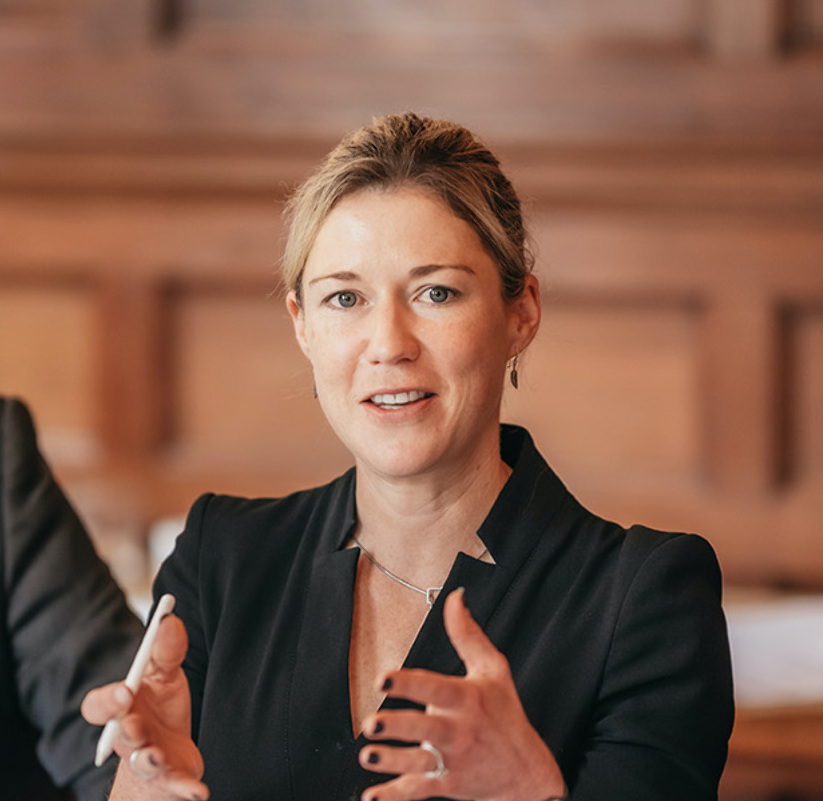
Maria D’Auria: Does that then fundamentally change the asset management business? Some of the economic decisions we’re being asked to make probably don’t stack up on short-term time horizons but decisions are often made on short-term times horizons ad rewards aligned to them. You have to take a leap of faith and run the risk of being less competitive in the short term perhaps. How does the asset management industry deal with that?
Rory Sullivan: That’s really interesting and makes me wonder about LDI, liability driven benchmarks, which in theory has many of the characteristics we need, and where you see assets owners commit to a single fund manager for very long periods of time and for very low returns, which a commensurate risk profile. Now we haven’t had anything like that creatively applied to sustainability but I wonder if we can put that to the asset managers: can you reinvent what you offer the market which prevents the short-term approach?
Vicki Bakhshi: The net zero frameworks that have been developed to date focus a lot on listen equities and they focus a lot on decarbonization rather than solutions and the people that designed them know that and they know shifting capital is going to be important. So there’s a big question around asset allocation and I’d be interested to know what the consultants are saying because you probably can’t achieve the required shift of capital by reallocating within a listen equities bucket. I think we’re going to need asset owners to look more creatively at infrastructure, private equity and other alternative assets.
Simon Hughes: I think we’re talking about decarbonization achieved by changing the things we’re doing at the moment, rather than changing the system we operate in and for me that’s the biggest risk; that we’re not thinking hard enough about changing behaviours or what a future society has to look like. We’re investing in a society that’s a replication of the way we see it today.

